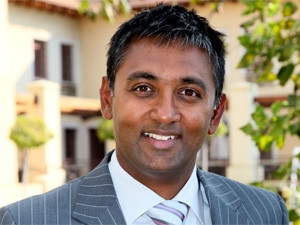
Every organisation may wish to be analytical and forward-looking in their thought processes, but not all organisations have the operational abilities to start moving in that direction.
This is according to Desan Naidoo, MD at SAS Southern Africa.
"To manage this, companies need to start thinking about analytics as a story teller," he says.
Storytelling, explains Naidoo, happens at different levels of detail in every organisation; the mathematician will tell a story in much more colourful detail than the analyst or data scientist; however, the important thing is for everyone to use a consistent, repeatable, reliable methodology for telling the same story - at different levels, to be sure - but the same story irrespective of the user.
"Mathematics is a wonderful thing. It will not only allow you to expose stories that you suspect exist, or have read about before; its major value add is showing you patterns and correlations in your data that you had no idea, or even suspected, could possibly exist," Naidoo adds.
Return on investment (ROI), he notes, has a specific methodology for being uncovered and exposed; a lot of that relies on 'hard facts', the rest of the formula, however, is reliant on a softer science called 'interpretation'.
"The essence of using the analytics life cycle, its components and mathematics underpinning it, is that it will provide storytellers with the capabilities and tools necessary to explore and produce the 'hard facts' in an easy, repeatable, reliable, trustworthy fashion," he says. "It will then allow 'interpretation' of those facts to be made easier, by more people with more collective experience, in a collaborative fashion, for quicker decision-making and, ultimately, ROI."
There are challenges, however, observes Naidoo. The organisational readiness needs to be assessed against people and process mostly. Do they have the right people who can be trained to become analytical storytellers?
"Some organisations are set in their ways. I know some CEOs who still get their secretaries to print out their e-mails and respond in pen or via Dictaphone," adds Naidoo.
The analytical space, remarks Naidoo, is currently caught up in explaining all the buzzwords and products - advanced analytics, business and customer intelligence, OLAP, data management, OnDemand solutions, HPA - that businesses often do themselves a disservice.
"Ultimately, we may all have a different part to play in the analytics cycle, but at the heart of it, we are relating the story of our business," he adds.
He further states that if an organisation knows who its customer is, what he/she looks like, and what patterns of behaviour they are following now, it is much easier for organisations to start interpreting future behaviour and stories, not only for specific customers, but for customer groups in general.
"Businesses need to ask, what story can I tell using the information I have gleaned from the analytics?"
He explains that a business should be able to tell a story of how a client is engaging with the company and how that relationship can improve as a result of the story elements being shared.
For Naidoo, analytics for analytics' sake simply does not deliver the business value it should. Every analysis done, whether it is a great piece of analytics or not, has to track back to the business and provide measurable insight.
"As one SAS customer said, the ultimate goal for us on storytelling through the analytics life cycle is not the elimination of mistakes, but to make mistakes quicker and take corrective action faster," concludes Naidoo.
Share